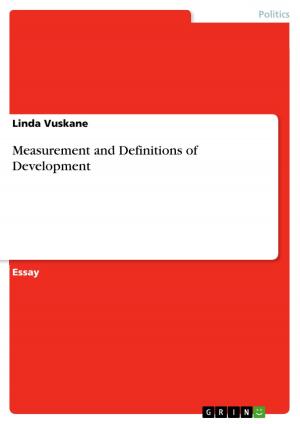Comparison of the Most Important German Commercial Banks
Business & Finance, Finance & Investing, Banks & Banking| Author: | Andreas Vester | ISBN: | 9783638458696 |
| Publisher: | GRIN Publishing | Publication: | January 20, 2006 |
| Imprint: | GRIN Publishing | Language: | English |
| Author: | Andreas Vester |
| ISBN: | 9783638458696 |
| Publisher: | GRIN Publishing |
| Publication: | January 20, 2006 |
| Imprint: | GRIN Publishing |
| Language: | English |
Seminar paper from the year 2004 in the subject Business economics - Banking, Stock Exchanges, Insurance, Accounting, grade: A, Indiana University of Pennsylvania, course: Financial Markets & Institutions, 43 entries in the bibliography, language: English, abstract: The German banking industry is a highly regulated market with over 2,200 banks1. These banks are not equal at all. On the one hand, there are private owned commercial banks; on the other hand there exist savings banks, so-called 'Sparkassen', as well as 'Genossenschaftsbanken' that are equal to credit unions in the U.S. The German banking industry is just at the beginning of a structural change. In the recent past there have been a couple of mergers and bankruptcies within the banking industry. But a big change did not happen yet. In this paper we analyze the four biggest and most important German commercial banks -Deutsche Bank, HypoVereinsbank, Commerzbank, and Dresdner Bank - and their standing within the international banking industry. We examine the profit situation, the credit management, the worldwide role in asset management, as well as mergers and acquisitions during the past few years. Additionally, we expounded possible structural changes and chances within the German banking industry in the near future.
Seminar paper from the year 2004 in the subject Business economics - Banking, Stock Exchanges, Insurance, Accounting, grade: A, Indiana University of Pennsylvania, course: Financial Markets & Institutions, 43 entries in the bibliography, language: English, abstract: The German banking industry is a highly regulated market with over 2,200 banks1. These banks are not equal at all. On the one hand, there are private owned commercial banks; on the other hand there exist savings banks, so-called 'Sparkassen', as well as 'Genossenschaftsbanken' that are equal to credit unions in the U.S. The German banking industry is just at the beginning of a structural change. In the recent past there have been a couple of mergers and bankruptcies within the banking industry. But a big change did not happen yet. In this paper we analyze the four biggest and most important German commercial banks -Deutsche Bank, HypoVereinsbank, Commerzbank, and Dresdner Bank - and their standing within the international banking industry. We examine the profit situation, the credit management, the worldwide role in asset management, as well as mergers and acquisitions during the past few years. Additionally, we expounded possible structural changes and chances within the German banking industry in the near future.















